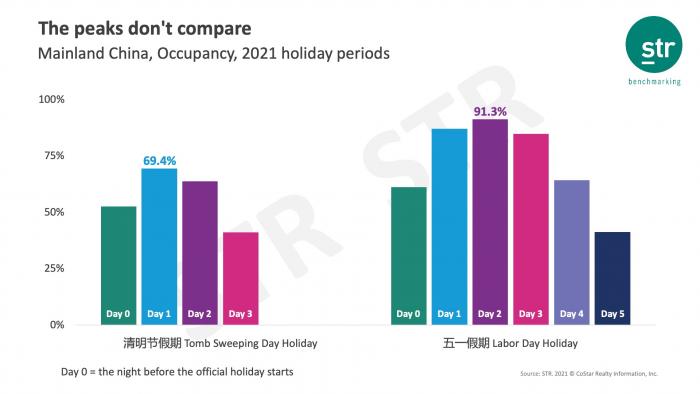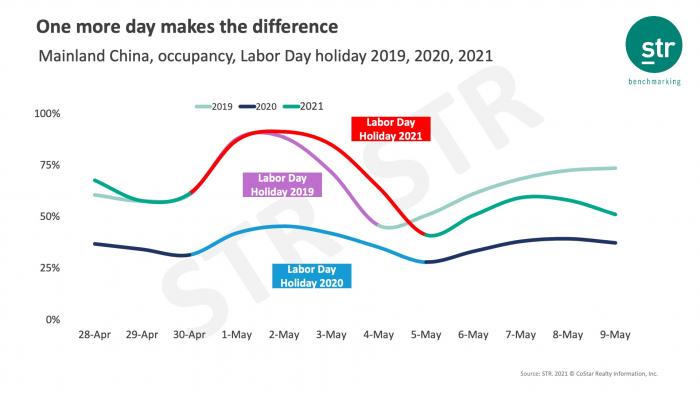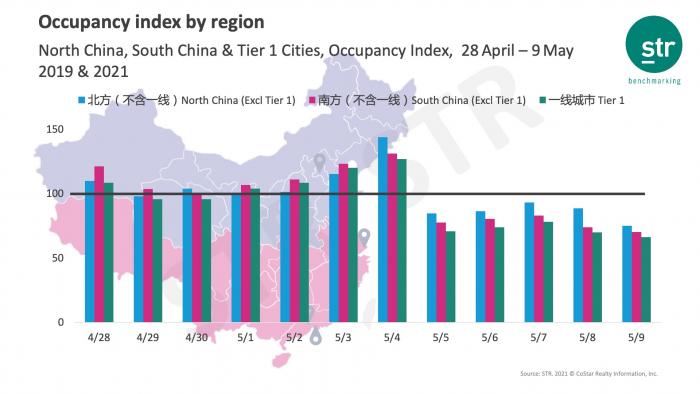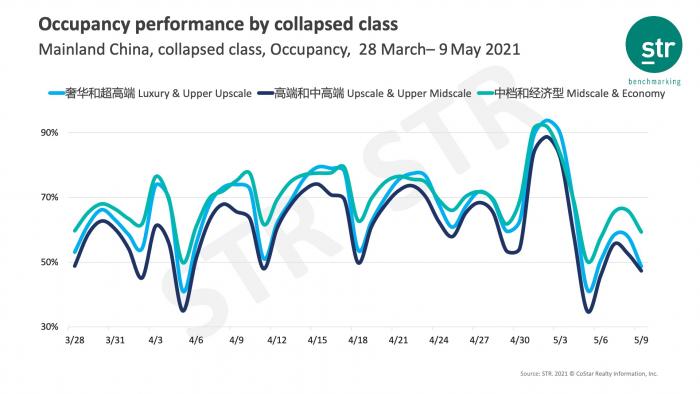China’s Labor Day holiday (1-5 May) stimulated travel demand and provided a noticeable boost to hotel performance. Thanks to an additional day during the holiday period, the rise in performance pushed levels beyond another recent holiday and even some 2019 comparables. The impact, however, was not even across all markets and hotel classes.
Bigger than the Qingming Festival holiday
The highest hotel occupancy point during the Labor Day period was day two, which reached 91.3%. That was nearly 22 percentage points higher than day two of the Qingming Festival holiday period during the first week of April. Interestingly though, occupancy on the last day of each holiday period was 41%.



